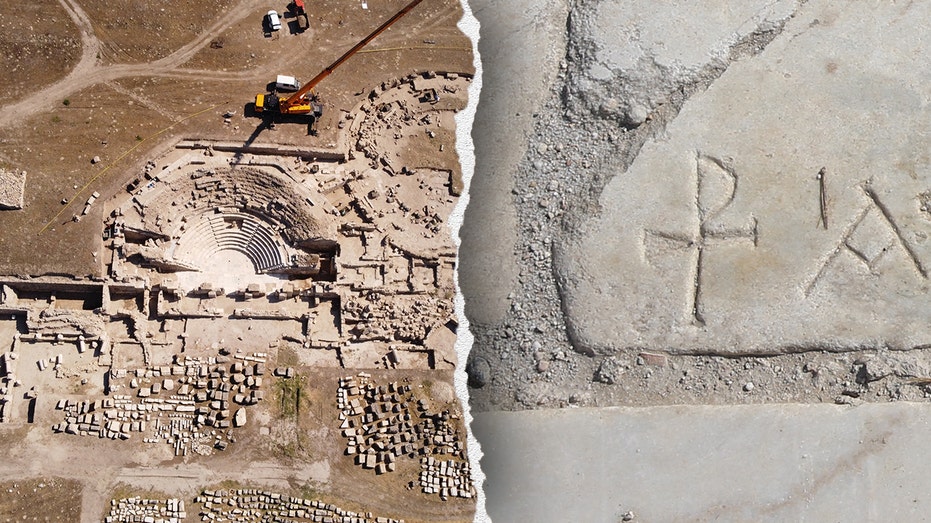2,000-year-old Roman hall plus Christian symbols unearthed in biblical city from Book of Revelation
Archaeologists recently unearthed the remains of a massive Roman council hall in Turkey and the site holds carvings linked to early Christian worship.The discovery, found in the ancient city of Laodicea, was reported by Anadolu Agency, Turkey's news agency, in August.Located in the modern Turkish province of Denizli, Laodicea is mentioned multiple times throughout the Bible, including the Book of Revelation.ANCIENT CHRISTIAN CHURCH REVEALS MYSTERIOUS 1,600-YEAR-OLD WARNING TO NONBELIEVERS: 'ONLY THE RIGHTEOUS'In Revelation 1:11 (KJV), Jesus Christ tells John, "What thou seest, write in a book, and send it unto the seven churches which are in Asia; unto Ephesus, and unto Smyrna, and unto Pergamos, and unto Thyatira, and unto Sardis, and unto Philadelphia, and unto Laodicea."Laodicea also appears in the Book of Colossians. The Apostle Paul acknowledges it as an early Christian community.Pictures of the site show a cross carved into stone, as well as what appears to be the early Christian Chi-Rho monogram, which represents the first two letters of "Christ" in Koine Greek. The etchings are also accompanied by Greek text.ARCHAEOLOGIST UNEARTHS MYSTERIOUS CHRISTIAN SETTLEMENT HIDDEN AWAY FOR CENTURIESThe images also show the remnants of the ancient Roman council building, including a headless statue of the Roman emperor Trajan and the remains of a theater.Archaeologists believe the building dates back about 2,050 years, though the age of the Christian etchings is unknown.CLICK HERE TO SIGN UP FOR OUR LIFESTYLE NEWSLETTERIn the past, excavators also found a statue of a priest's head at the site, per the Turkish news agency, along with a sculpture depicting Scylla, a monster from Homer's "The Odyssey."Archaeologists told the news agency the ancient building functioned as Laodicea's main political and judicial center and its shape, with pentagonal outer walls and a hexagonal plan, may be the first of its kind in Anatolia.For more Lifestyle articles, visit foxnews.com/lifestyleThe structure held as many as 800 members in the late first century B.C., with the names of various citizens, elders and youths inscribed on the seats, according to the same source.The discovery follows a series of recent biblical archaeology finds that have made headlines this year.This spring, an Israeli child found an ancient amulet at Tel Azeka, a hill in the Judaean Foothills referenced in the Book of Samuel.Earlier this year, a group of archaeologists found evidence of an ancient garden at the Church of the Holy Sepulchre in Jerusalem.




